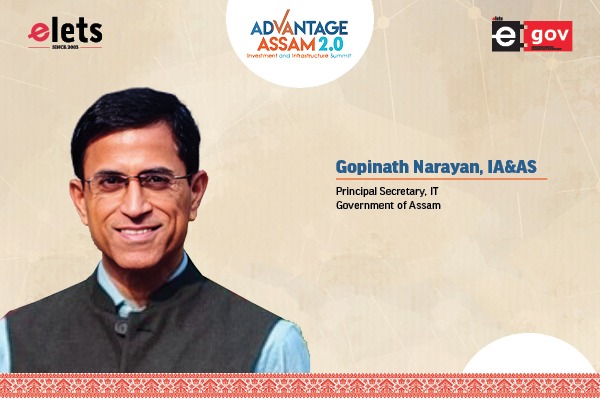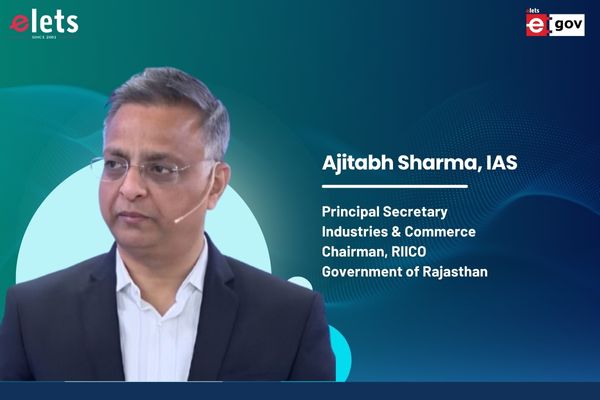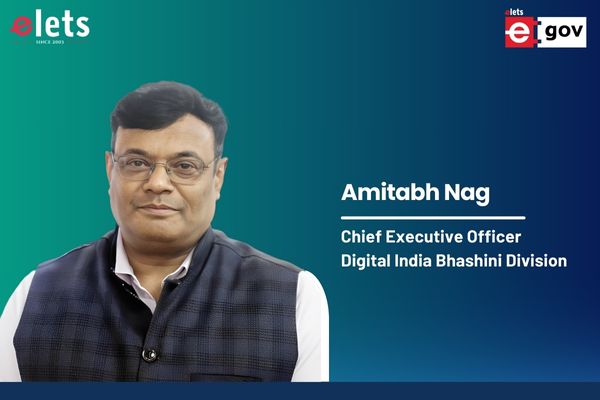
Haryana is the country’s food bowl and makes significant contributions to the nation’s food security. With crop diversification and awareness among farmers, Haryana is now moving towards modernisation of agriculture which promises to be the engine of growth for the state. Jai Prakash Dalal, Minister of Agriculture, Fisheries and Animal Husbandry, Government of Haryana enumerates some of the measures taken.
How has the government used the current pandemic situation to assist farmers?
During the COVID-19 pandemic, the Centre and the State Government announced several new schemes for the welfare of farmers, turning the nationwide lockdown period into an opportunity.

Haryana government has announced the opening of 2000 outlets under the Harit Brand across the State, on which Haryana Agro Industries Corporation is actively working. The State is encouraging farmers to become entrepreneurs, along with pursuing farming. To continue the move, the Centre had recently brought the Farmers’ Produce Trade and Commerce (Promotion and Facilitation) Ordinance, 2020. Also, the government brought in the Farmers (Empowerment and Protection) Agreement on Price Assurance and Farm Services Ordinance, 2020 to allow farmers to sell their produce, not only in the mandis of Haryana but also in mandis of other states as per their wish. Similarly, under contract farming, they can enter into an e-contract with any person or bank for their produce. Now they will not be required to mortgage their land with the bank for crop loans.
Further, Devlali to Danapur ‘Kisan Rail’ is an excellent initiative to make agricultural products of perishable fruits and vegetables directly accessible to consumers. During COVID-19, Haryana provided financial assistance ranging from Rs 4000 – Rs 5000 to about 16 lakh families; whether it was under Mukhyamantri Parivar Samridhi Yojana or was made available through the Haryana Building and the other Construction Workers’ Welfare Board.


What are the measures in diversification that the Haryana government is taking in the state?
Haryana government is making preparations to open a Centre of Excellence for Horticulture in every district. Haryana Department of Agriculture and Farmers Welfare is making relentless efforts to fulfil the Prime Minister’s dream of doubling the farmer’s income by 2022. Farmers should also move towards horticulture farming instead of traditional agriculture. Several public welfare schemes have been implemented by the Horticulture Department to attract farmers. Moreover, subsidies for the cultivation of fruits and vegetables are also made available.
Further, to promote horticulture in the state, Haryana is planning to open Horticulture Centres in every district. Farmers will be trained on the latest techniques of farming at the Horticulture Centres of Excellence. A progressive farmer has set up a mushroom project Rs 2 crore in village Nangal Brahmin in Palwal district that can generate an income of about Rs 50 to 60 lakh per annum. Department of Agriculture and Farmers’ Welfare will make efforts to start such projects in other districts of the state as well. The youth will also get employment through this. Farmers will be provided electricity at subsidised rates for setting up mushroom projects, he informed.
The horticulture area in Palwal district is close to 550 hectares, and we are trying to enhance the horticulture area to 5,000 hectares in the next two years. There is immense potential in horticulture farming, and the youth should also take an interest in gardening, animal husbandry, and fisheries.
What are the schemes that the state government is launching in the Animal Husbandry domain?
We are ensuring that all the applicants are provided with Pashu Kisan Credit Cards. The scheme was launched to cater to farmers who are into animal husbandry along with farming. Sometimes due to lack of money, farmers have to sell their livestock and sometimes they are not able to afford treatment of their livestock.
Also Read: Haryana collaborates with Israel for agritech to enhance horticulture: JP Dalal
In the view of all these problems, the state government started the Pashu Kisan Credit Cards Scheme 2020. Through this scheme, farmers will be able to take good care of their livestock by taking credit. Under the scheme, Pashu Kisan Credit Cards will be issued to farmers based on the number of livestock they own. A loan amount of Rs 40,783 is given for cows, Rs 60,249 for buffalos, Rs 4063 for sheep and goat, Rs 16,337 for pigs, and Rs. 720 for poultry.
What are the initiatives that the state government is taking to help entrepreneurs and startups based on agriculture?
The state launched the Agribusiness Incubation Centre (ABIC) at Chaudhary Charan Singh Haryana Agricultural University, Hisar to aid those aiming to start a new venture in agriculture or its allied sectors. The Centre is playing an essential role in helping the entrepreneurs with new ideas, startups and innovators in the agriculture sector to carve a niche for themselves. So far, dozens of new startups have been running successfully through this centre, employing hundreds of people.
In fact, in collaboration with NABARD and the Ministry of Agriculture and Farmers’ Welfare, ABIC is working on polishing and implementing the ideas of new entrepreneurs in agriculture and allied sectors to help them achieve success. For this, entrepreneurs are not only given financial assistance for their startups but also to overcome the financial hurdles they face later during the business.
The Incubation Center has recently announced the “PAHAL 2020” and “SAFAL 2020” programs under the Rashtriya Krishi Vikas Yojana (RKVY) – Remunerative Approaches for Agriculture and Allied Sectors Rejuvenation (RAFTAAR) in Haryana and neighbouring states and Union Territories.
During the training program, participants will be given stipend at the rate of Rs. 10,000 per month, while the entrepreneurs who complete the training program will be considered eligible for applying for financial assistance of Rs. 5 lakh in the PAHAL category and Rs. 25 lakh in the SAFAL category.
What is the Kisan Mitra Club that the state government has started?
“Kisan Mitra Club” scheme would be implemented in the State under which government officers, progressive farmers and volunteers would assist the farmers in better financial management and also adopting latest agriculture practices for increasing agricultural production.
Announced recently by the Chief Minister Manohar Lal, under the scheme government officers, progressive farmers and volunteers would give valuable suggestions to the farmers and help them in enhancing their income. There would be one Kisan Mitra for every 100 farmers and therefore, for 17 lakh farmers in the State, there would be 17,000 Kisan Mitras.
What are your views on the recent Ordinance to promote barrier-free intrastate trade in agriculture?
The ordinance would undoubtedly pave the way for creating ‘One India, One Agriculture Market’ and this would enable farmers to sell their products anywhere in the country. The Cabinet has also approved the recommendations proposed by the Commission for Agricultural Costs and Prices for declaring the Minimum Support Price for Kharif crops, which is also a welcome step.
Also Read: Centre & Haryana is taking steps to benefit farmers from past 6 yrs: Manohar Lal Khattar
The NDA government is the first Government which has implemented a formula for fixing the Minimum Support Price (MSP) of crops every year, and the MSP is announced before the sowing season starts. Thus, helping the farmers to make up their minds in advance to decide sowing of their crops as per the prices.
While the Union Cabinet decision would ensure beneficial prices for the farmers produce, the income of the farmers would also increase. Haryana is among those states which make certain to give MSP as per the recommendations of the Commission. Haryana is swiftly moving ahead towards the concept Peri-urban, while on the other it is also making sure to meet the daily demands of products including milk, fruits, vegetables, flowers and poultry required for about 5 crore population residing in the National Capital Region.
What are the measures taken to help farmers diversify crops and move away from paddy plantation?
Cotton growers in 17 districts of Haryana, who had diversified from paddy under the ‘Mera Pani – Meri Virasat’ scheme during Kharif 2020, will soon receive their first instalment of incentive at the rate of Rs. 2,000 per acre, directly into their bank accounts. A total of Rs 10.21 crore will be disbursed to such farmers as the first instalment.
The instalment is being disbursed to farmers through Direct Benefits Transfer mode after completion of the physical verification process by officials of the Department. A total of 20,420 hectares was verified to have been diversified from paddy to cotton in districts Sirsa, Fatehabad, Jind, Hisar, Kaithal, Jhajjar, Bhiwani, Charkhi Dadri, Sonepat, Rohtak, Faridabad, Palwal, Rewari, Mewat, Gurugram, Panipat and Karnal.
Cotton growers in district Sirsa would be the biggest beneficiaries under the scheme, with more than Rs. 2.26 crore to be distributed amongst them for opting to sow the cash crop in 4,523 hectares. Farmers in districts Fatehabad and Jind would also get incentives totalling more than Rs. 1.98 crore and Rs. 1.97 crore, respectively, for cultivating cotton in 3,966 hectares and 3,945 hectares, respectively.
‘Mera Pani – Meri Virasat’ scheme had been implemented to conserve the depleting groundwater table in the State. Farmers in water-stressed blocks of Ratia (district Fatehabad), Siwan and Guhla (district Kaithal), Pipli, Shahabad, Babain and Ismailabad (district Kurukshetra) and Sirsa (district Sirsa), were being encouraged to cultivate alternate crops. The State Government had promised to pay Rs 7,000 per acre for the diversified crop, of which the first instalment of Rs 2,000 per acre would be paid after verification and the remaining Rs 5,000 per acre when the crop is in the maturing stage.
To facilitate the farmers the Haryana government would procure all diversified crops such as maize, bajra, and pulses at Minimum Support Price (MSP). The Gram Panchayats would not permit paddy growing in agricultural lands owned by them.
Moreover, on the initiative of the Haryana government, the declaration of the minimum support price of crops before the sowing season by the Centre since 2017 have started showing positive results. As a result, not only the costs of crops are increasing by more than 50 percent every year, but the area under crops is also growing continuously.
Be a part of Elets Collaborative Initiatives. Join Us for Upcoming Events and explore business opportunities. Like us on Facebook , connect with us on LinkedIn and follow us on Twitter, Instagram.
"Exciting news! Elets technomedia is now on WhatsApp Channels Subscribe today by clicking the link and stay updated with the latest insights!" Click here!













